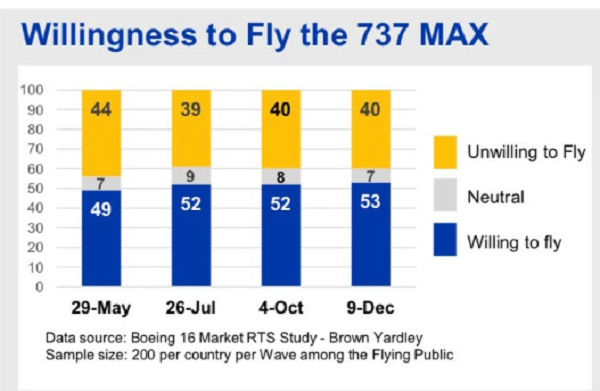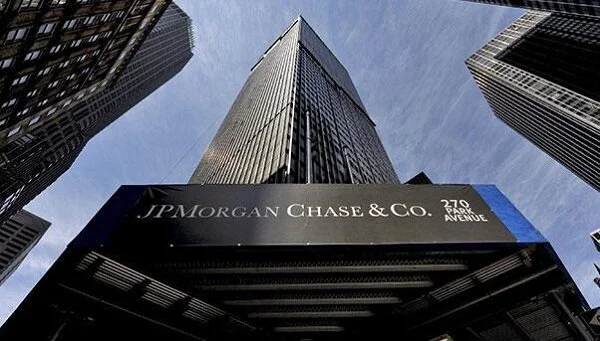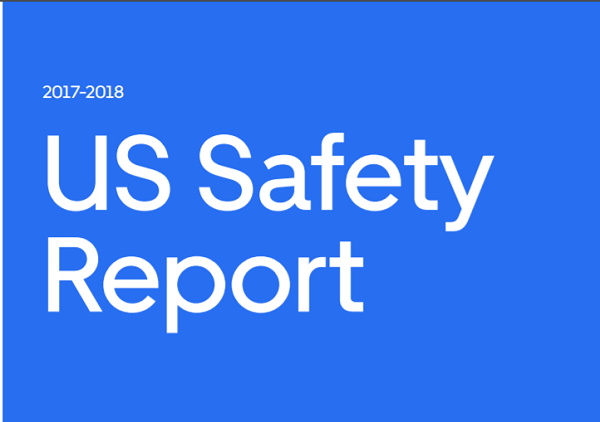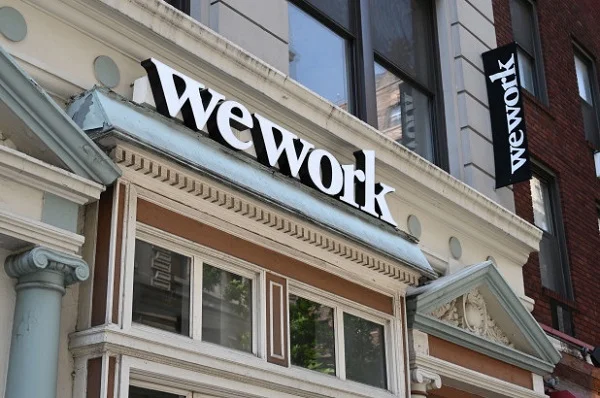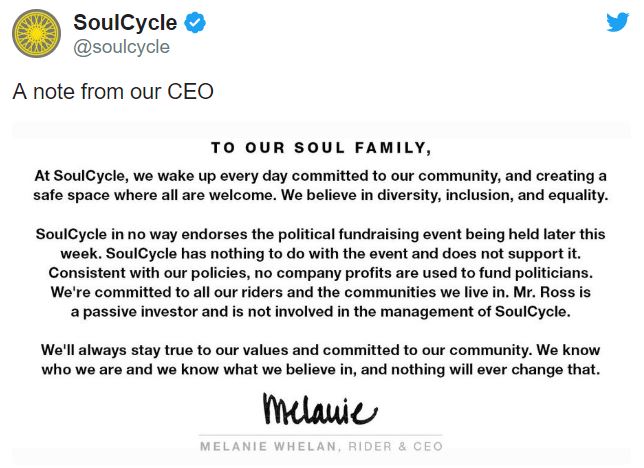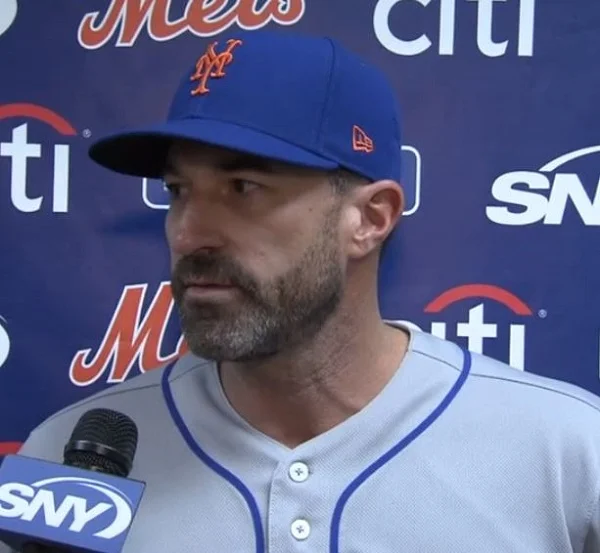Boeing's Crisis Communication Plan
During the holiday break, several news items about Boeing were relevant to business communication and character. In one article, the New York Times revealed internal Boeing documents showing a company trying to rebuild its image after two MAX crashes within a year..
The documents give us an inside view of how the company plans to use persuasive strategies to win back customers. In one graphic, we see customers’ willingness to fly. In another, we see customer concerns and ways Boeing can address them, for example, with FAQ cards, “pilot confidence videos,” or personal connections (for example, “Flight attendant offers comfort and information on the safety of the MAX”).
Discussion:
What persuasive strategies does the company plan? Try to find examples of logical argument, emotional appeal, and credibility.
What are the consequences of this information becoming public? Does it likely endear the public to the company’s concerns, embarrass the company, or something else?
JPMorgan Recorded Phone Conversation
Jimmy Kennedy, an African-American former National Football League player, tried to open a private wealth account at JPMorgan but had trouble getting attention. He recorded a conversation with an African-American employee, Richardo Peters, who said, “You’re bigger than the average person, period. And you’re also an African-American. We’re in Arizona. I don’t have to tell you about what the demographics are in Arizona. They don’t see people like you a lot.”
In a New York Times article that published the recording, Peters recounted a specific example of discrimination against a Black customer. When he was trying to bring on another new client, who had received a large settlement, his manager said, “You’ve got somebody who’s coming from Section 8, never had a nickel to spend, and now she’s got $400,000, What do you think’s going to happen with that money? It’s gone.” His manager’s position was that the customer would not invest money with the bank.
Other incidents at the bank led to Peters’ termination, and he is suing for racial discrimination. JPMorgan also recently settled a class-action lawsuit for $24 million to Black employees who claimed discrimination: according to a New York Times report, “in some cases by isolating them from colleagues and dumping them in poorer branches.”
A few days later, CEO Jamie Dimon addressed the situation in a memo to employees.
Discussion:
How do you assess this situation at JPMorgan? Read more in the NYT article.
A February Essence article describes and praises JPMorgan’s Advancing Black Pathways program to support the Black community. What’s your view of the effort in light of this news?
How do you assess CEO Jamie Dimon’s response in the memo? We don’t see the entire memo, but CNBC posted quotes.
Data in the Uber's Safety Report
Uber published its first safety report, and the company is lauded for its transparency. A Wall Street Journal article leads with the number of sexual assaults reported during the last two years: 5,981. Of course, any number is too many—no one should be assaulted in an Uber or anywhere else. And sexual assaults are notoriously underreported, so we have no idea how many have actually occurred.
At the same time, a skeptic might want to know the total number of rides in order to put the number of reports in context. The report does provide this information (see the report for footnotes):
The report makes additional attempts to put the numbers in context:
All of that work culminates in the Safety Report that we are sharing with you, the public, today. To put US safety challenges in context:
• In 2018, over 36,000 people lost their lives in car crashes in the United States alone (3)
• Approximately 20,000 people were the victims of homicide in 2017(4)
• Nearly 44% of women in the US have been a victim of sexual violence in their lifetime—which means that more than 52 million women live with that experience every day (5)
Every form of transportation is impacted by these issues. For example, the NYPD received 1,125 complaints of sex offenses in the transit system during the same time period covered by this report.(6,7) In the United States alone, more than 45 rides on Uber happen every second. At that scale, we are not immune to society’s most serious safety challenges, including sexual assault. Yet when collecting data for that portion of our report, we found there was no uniform industry standard for counting and categorizing those types of incidents.
The 84-page report is incredibly detailed and includes external reports for credibility and the number of charges for various types of assaults.
Discussion:
Analyze the report: the audience, communication objectives, organization, writing style, format. What works well, and what could be improved?
Does the context in these examples convince you that the numbers aren’t so bad? Why or why not?
Otherwise, how well does Uber address the safety issues? How do you assess the report credibility? What other questions do you have?
Why Entrepreneurs Don't Learn from Their Mistakes
A Wall Street Journal article describes research about failing entrepreneurs. The results are sobering: start-up business owners don’t seem to learn from their mistakes.
Francis Greene, at Edinburgh University Business School, explains several reasons for lack of learning. First, when entrepreneurs start new businesses, they have a different context and different customer, so any lessons learned from previous businesses might not apply. Greene also says that businesses typically “limp along”; during this slow-close process, it’s difficult to identify what the real problems were.
Finally, as you might expect, we have psychological barriers for failing to learn from failure. We tend to simplify reasons and blame external factors.
Greene suggests taking time to explore what happened after a business failed and ensuring that we have the industry expertise to succeed in the next venture.
Discussion:
This reminds me of Amy Edmondson’s HBR article, “Strategies for Learning from Failure.” What similarities and differences do see in their research findings and recommendations?
When have you failed? How did you learn from the experience? Can you identify ways to learn better in the future?
Fabricated Letters to the SEC
The U.S. Securities and Exchange Commission is planning a policy change that, as a Bloomberg article describes, “would shift power from investors to corporate boards” and “limit[s] the power of dissenting shareholders.” Unfortunately, when Chairman Jay Clayton announced the change, he cited several fabricated letters of support to the SEC.
The SEC failed to recognize that many letters followed a similar template and included a random line in the mailing address—“A Coalition of Growth Companies.”
Clayton was impressed that the SEC heard from such a variety of people, such as veterans and retired police officers, but people contacted said they didn’t write the letter or agreed to having their name on a letter without understanding the implications.
The Bloomberg article reports Clayton’s response:
The SEC declined to comment on any irregularities with the letters. In a Tuesday interview, Clayton sidestepped a question about how the agency ensures comment letters are genuine. He did emphasize that the regulator’s potential revamp of shareholder voting rules are proposals, adding that there will be ample time for people on both sides to weigh in before any changes are finalized.
“We welcome input in all ways,” Clayton said in the interview with Bloomberg Television’s David Westin. “On this issue, where there are a lot of different views and a lot of different interests, we encourage people to come in and talk to us, send us their comments.”
Discussion:
How does something like this happen? Who is responsible?
Assess Clayton’s response. How well is he handling the situation? What, if anything, should he do differently?
What leadership character dimensions are illustrated by this situation?
Boeing CEO Responds to Questions
This week, Boeing CEO Dennis Muilenburg answered lawmakers’ questions about the two Max 737 plane crashes in the past year. Facing families of deceased passengers, Muilenburg began his testimony with an apology:
“I’d like to begin by expressing my deepest sympathies to the families and loved ones of those who were lost in the Lion Air Flight 610 and Ethiopian Airlines Flight 302 accidents, including those who are here in the room today. I wanted to let you know, on behalf of myself and all of the men and women of Boeing, how deeply sorry I am. As we observe today the solemn anniversary of the loss of Lion Air Flight 610, please know that we carry the memory of these accidents, and of your loved ones, with us every day. They will never be forgotten, and these tragedies will continue to drive us to do everything we can to make our airplanes and our industry safer.”
One of the most tense moments was when Senator Ted Cruz questioned Muilenburg (see video). Muilenburg also faced criticism as he was leaving. The mother of a victim of the second crash responded to his invoking his Iowa farm background:
“Go back to Iowa. Do that.” She also said, “I don't feel like you understand. It's come to the point where you're not the person anymore to solve the situation."
Discussion:
Watch more of Muilenburg’s testimony. What are some examples of questions he addressed well, and how could he have done better?
How well does Muilenburg balance emotional appeals, logical arguments, and credibility in his testimony?
What leadership character dimensions are illustrated by this situation and by Muilenburg’s testimony?
Muilenburg’s interaction with the mother is a difficult situation for anyone to handle, and we can certainly understand her grief and anger. How would you have responded?
CNN reports:
“In response, Muilenburg said he respects her viewpoint. "But I want to tell you the way I was brought up. And I'm just being honest here about it. I learned from my father in Iowa ... when things happen on your watch you have to own them and you have to take responsibility for fixing them," he said.
Astros Executive Fired After Yelling at Female Reporters
Brandon Taubman, assistant manager of the Houston Astros baseball team, was fired after comments made to female reporters. The situation became more complicated because the team, at first, criticized a Sports Illustrated reporter, Stephanie Apstein, and called her article, “misleading and irresponsible” and a “fabrication.”
In the team club house, after a game, Taubman yelled at the female reporters, “Thank God we got Osuna. I’m so f------ glad we got Osuna!” The MLB suspended Osuna for 75 games because of a domestic violence charge, and the Astros took a PR risk in hiring him. A Sports Illustrated writer criticizes the team’s decision:
But in truth, the Astros' front office acts as if it is tired of being yelled at about this subject. They want to be allowed to play their baseball games and pop their champagne without being forced to think about anything that happened away from the ballpark.
The team’s first response of defending Taubman didn’t stick. They later issued a statement apologizing to both the group of female reporters and Apstein.
Ernst & Young is scrubbing its website of ties to Taubman, who worked for the firm. EY is facing its own trouble following criticism about a training program for women.
Discussion:
What’s your view of the situation—both Taubman’s outburst and the Astros’ response?
Analyze the team’s statement. What leadership character dimensions does this illustrate, and how does it fall short? What could be improved?
Did EY do the right thing by trying to disassociate with Taubman? Why or why not?
WeWork: "Humbler"
Several articles in the past few weeks have scolded WeWork CEO Adam Neumann and the investors who followed his story.
The Wall Street Journal was the first to describe Neumann’s odd behavior and published another article, “WeWork Investors Turned Off by ‘Sloppy’ IPO Filings.” The recent article explains one problem in the filings (shown below):
“A section headed ‘illustrative annual economics’ that assumed 100% workstation utilization vanished, for example, as did two graphs portraying a typical location going from ‘-$’ to ‘+$,’ with no y-axis showing the actual dollar amounts being depicted.”
A New York Times article, “Was WeWork Ever Going to Work?” criticizes investors for missing obvious problems with the company’s initial business plan, such as the reliance on start-up revenue when most entrepreneurial ventures fail. According to this report, it took people finally looking at the data to realize how much We is losing and how hard it will be for the company to succeed.
The article includes other examples of investors’ blind exuberance:
“It is not merely money that separates the ruling class from the rest of the country. Often it seems as if it is the gaping difference in the application of common sense. Ultimately, it was the bankers, technocrats, statesmen and acolytes of the data-junkie class who were willing to believe that Elizabeth Holmes, a 19-year-old college dropout who thought a black turtleneck would make her Steve Jobs, was going to revolutionize blood-testing. It didn’t seem to matter that she could not deliver any real evidence to prove it.”
An Inc. article, “The Future of WeWork: Leaner, Humbler, and Duller,” suggests a new path for We. The author suggests less hype, fewer employees, and more discipline for the company to survive.
Discussion:
Who do you blame for WeWork’s failed IPO?
If you believe the New York Times article, investors are gullible. Do you agree with this assessment? If so, why might this be the case?
Read the “Note”—the fine print—under the table, shown above. How do you interpret this information?
What should We do now to build credibility and save the business?
Third CEO Announcement This Week: Wells Fargo
Wells Fargo announced a new CEO: former BNY Mellon, Visa CEO Charlie Scharf. According to a Bloomberg report, Scharf is “quiet-ish” and known for being “direct and willing to clean house”
Scharf joins Wells Fargo as the company battles scandals beginning in 2016, when about 2 million fake accounts were discovered. Since then, the company has faced additional ethical questions and hasn’t fully recovered its image.
In its news statement, Scharf expressed his enthusiasm for the new job:
“I am honored and energized by the opportunity to assume leadership of this great institution, which is important to our financial system and in the midst of fundamental change. I have deep respect for all the work that has taken place to transform Wells Fargo, and I look forward to working closely with the board, members of the management team, and team members. I am committed to fully engaging with all of our stakeholders including regulators, customers, elected officials, investors, and communities.”
Scharf replaces General Counsel C. Allen Parker, who was appointed interim CEO, after Tim Sloan left in 2019.
Discussion:
How well did the Wells Fargo news statement meet its communication objectives?
The news statement doesn’t mention Wells Fargo’s troubled history. Should it? Why or why not?
Industry insiders expect Scharf to make significant changes in the organization. If you were considering a position at Wells Fargo, how would this news affect your decision?
WeWork Co-Founder and CEO Steps Down
WeWork announced that Adam Neumann will leave his position after controversy about the company’s financial situation and the co-founder and CEO’s behavior. Within a week, the company went from preparing for an IPO to facing criticism that led to this ouster and a delayed public offering.
The company valuation has been reduced from about $47 to $15 billion based on governance issues and what the Wall Street Journal calls “ballooning losses.” The Journal also reported on Neumann’s “eccentric behavior,” including a heavy-party lifestyle that recently involved bring marijuana on a plane to Israel and saying that he might like to be the prime minister.
In its news release, WeWork provided scant information and a few quotations, including this from Neumann:
“As co-founder of WeWork, I am so proud of this team and the incredible company that we have built over the last decade. Our global platform now spans 111 cities in 29 countries, serving more than 527,000 members each day. While our business has never been stronger, in recent weeks, the scrutiny directed toward me has become a significant distraction, and I have decided that it is in the best interest of the company to step down as chief executive. Thank you to my colleagues, our members, our landlord partners, and our investors for continuing to believe in this great business.”
Discussion:
Compare the company’s news release to others announcing CEO departures. How does this one differ, and why would the company take this approach?
What are the communication objectives of Neumann’s statement? How well does his quote meet those objectives? What else, if anything, should Neumann say or do?
British Airways Labor Dispute Arguments
On Thursday, British Airways pilots went on strike for the second time this week, grounding about 1,700 flights. Wanting a greater share of profits, pilots have turned down the company’s offer of 11.9% in pay increases over the next three years.
Typical in these situations, the union and company blamed each other. The union, the British Airlines Pilots Association (Balpa), claims that company management chose to cancel flights instead of negotiating with them in good faith:
“Balpa set a gap between the first and second periods of strike action to give BA time to work with us to settle this dispute with their pilots. We had today been exchanging new ideas to do that via [the arbitration service] Acas and so it irresponsible and inconsiderate to its customers that BA has pulled out and decided to start cancelling flights now, just to save money on compensation. BA did not respond to our latest proposals before cancelling these flights.
“Passengers who will be affected by these cancellations should know that we have given BA multiple opportunities to work with us so we could call off this action.”
The company blames pilots for walking out:
“It is now a month since we shook hands on a pay deal. We urge [Balpa] to call off their strike and return to negotiations.
“To give our customers as much certainty as possible, we are now contacting all those affected to offer them a full refund or a rebook on an alternative date, destination or airline. We are very sorry that Balpa’s actions will affect thousands more travel plans.”
Discussion:
How effectively does each side express its perspective in the above quotes?
Research both sides of this debate. What are Balpa’s strongest and weakest arguments? What are BA’s?
What persuasive strategies does each side use in its arguments: logic, emotional appeal, and credibility?
Backlash After President Trump Fundraiser
Equinox and SoulCycle customers are not happy about a fundraiser for President Trump sponsored by the companies’ owner, the chairman of a real estate firm. Threats of boycotts and cancelled memberships provoked quick responses from both companies.
SoulCycle CEO Melanie Whelan also said, “SoulCycle has nothing to do with the event and does not support it. … We know who we are and we know what we believe in, and nothing will ever change that.”
Capitalizing on the brands’ distress, other fitness companies are offering discounts and free trials to try to win business.
Discussion:
More company executives feel inspired towards political activism. What are the advantages and risks?
Did the real estate company owner, Stephen Ross, act inappropriately by hosting a fundraiser? Why or why not?
Analyze the companies’ statements. What persuasion strategies do they use to rebuild each brand?
Compare the statements. Does one work better than the other? What criteria do you use to compare them?
Another Blackface Disaster
Belgium’s Africa museum hosted an event for which people arrived in pith helmets, blackface, and other offensive and stereotypical clothing. Understandably, the Congolese community is upset. As one representative said, "Ethnic, exotic or African is not a costume that you can put on and take off.” You can read about Belgium’s occupation of the Congo to understand the history.
The party was organized by a separate company, Thé Dansant, and one organizer defended the party: “Even if one person painted his face black, it was not meant to be offensive. Many people of African origin were enthusiastic about the concept and were present.”
So far, the Royal Museum of Africa is trying to distance itself from the event and hasn’t issued a statement or apology.
Museum image source.
Party image source.
Discussion:
What’s your view of Thé Dansant’s response?
What is the museum’s accountability? What should the leaders do or say?
Capital One's Response to the Breach
A hacker got access to 140,000 Capital One customers’ credit information and social security information, and about 106 million people were affected by other leaked information. Officials arrested Paige A. Thompson, who goes by “erratic” and was a former Seattle technology company software engineer.
In a bar chart, a BBC article puts this breach in context of others. Capital One’s press release describes the company’s quick response:
“Capital One immediately fixed the configuration vulnerability that this individual exploited and promptly began working with federal law enforcement.”
The release also includes a statement from Chairman and CEO Richard Fairbank:
"While I am grateful that the perpetrator has been caught, I am deeply sorry for what has happened. I sincerely apologize for the understandable worry this incident must be causing those affected and I am committed to making it right."
In addition, as expected, the release includes information for customers, offers free credit monitoring, and provides an FAQ.
Discussion:
Analyze the press release. Consider the audiences, objectives, organization, tone, and so on.
How well does Fairbanks demonstrate humility in the press release? What other leadership character dimensions are illustrated? How well does he inspire confidence in Capital One?
Analyze the BBC chart shown here. What works well about the chart, and what else would be helpful to understand these breaches in context?
Rutgers Chancellor "Berates" Police Officers
The Chronicle reported that Rutgers Chancellor Nancy E. Cantor “apologized for berating campus police officers.” On her way to the airport, Cantor’s driver hit a parked police car. She was detained and said, “If I miss my airplane, you folks are in trouble!” When an officer asked, “I’m sorry, who are you?” she yelled, “I’m the chancellor!”
The episode, which happened in March, was recorded on the officer’s body camera. Part of the debate is about whether Cantor needed to be detained because she entered the vehicle after the driver hit the other car.
Regardless, the video became public, Cantor apologized, and the Rutgers-Newark police chief responded:
“I appreciate Chancellor Cantor taking the time to review the video. I along with the RUPD are appreciative of her kind words and support. The sentiment is extremely appreciated, and we look forward to continuing a positive working relationship with the Rutgers-Newark chancellor’s office.”
Discussion:
Watch the video exchange. What’s your view of the chancellor’s behavior with the police officers?
Should the officers have done anything differently in this situation? Why or why not?
Assess the police chief’s response. How well does he demonstrate forgiveness?
Boeing at the Paris Air Show
After two fatal plane crashes involving its 737 Max jet, Boeing is trying rebuild its image, and the company made some headway at the Paris Air Show, an international aircraft sales event.
Company leaders are coming closer to admitting mistakes more directly. CEO Dennis Muilenburg said, “We clearly had a mistake in the implementation of the alert.” Muilenburg also admitted that company communications were “inconsistent” and “unacceptable.” Kevin McAllister, the company’s head of commercial aircraft, said, “We are very sorry for the loss of lives as a result of the tragic accidents...our thoughts and our prayers are with their families," and "Our priority is doing everything to get this plane safely returned to service. It is a pivotal moment for all of us.”
At right is a video of McAllister discussing future plans.
Illustrating confidence in the plane, IAG, which owns British Airway, ordered 200 new 737 Max jets, worth about $24 billion at list price. Airbus wants a chance to bid, and we’ll see whether the request is granted.
Discussion:
Based on this and other news reports, how well is Boeing recovering from its crisis? Read more about reactions to the IAG order to help inform your conclusion.
Analyze Kevin McAllister’s communication in the video. Compare his style and approach to Dennis Muilenburg’s. What similarities and differences do you observe?
Mets Manager Admits Mistake
Mets manager Mickey Callaway admitted that an “administrative” error of switching pitchers “probably cost” the team the game. According to reports, the admission was unusual. As one news outlet explained, “His postgame press conferences can get combative, and his unwillingness to admit to any wrongdoing hasn’t played well with the New York media.”
Fans and players seem to be responding positively to the Callaway’s apology. One example is the response from first baseman Pete Alonso:
“Having a manager that’s not straight up and honest, that’s tough to play for a guy like that. But I’m fortunate enough to play for a guy like Mick. I love playing for Mick and all of the other guys love playing for Mick because he’s been honest and straight-up.”
For years now, corporate stakeholders have expected more humility from leaders. Seeing an example in sports is refreshing.
Discussion:
What’s your view of Callaway’s admission?
Not everyone likes this approach. I haven’t seen the clip, but a friend tells me local sports commentators said they want to see more “leadership.” Is admitting failure not part of demonstrating leadership?
What other leadership character dimensions are illustrated by this example?
VW's New Ad
Volkswagen is still trying to rebuild its image after the emissions scandal in 2015. A new advertising campaign tackles the issue directly, beginning with audio news reports from that time. But the focus, described on YouTube, is on the future: “Every negative has a positive. Learn more about our all-electric vehicles and our plans to help make a better tomorrow at vw.com #drivefortomorrow #vw.”
With an emphasis on innovation, the ad is set to Simon and Garfunkel’s classic song, “The Sound of Silence.” Viewers can imagine company engineers during the past few years creating a new line of electric cars— while VW executives said little about the controversy.
The senior VP of marketing for VW of America acknowledged that the ad is risky but explains the rationale:
“[w]ithout mentioning the past...we would never have the credibility or authenticity to move forward with the brand. Through the last three-and-a-half years or so we kind of operated as usual in the consumers [sic] eye. We kept a very consistent message in the marketplace but didn’t really have a powerful point-of-view as a brand.”
Discussion:
What’s your view of VW’s new ad campaign? Did the company make the right decision by invoking the scandal?
Other companies facing scandals, such as Uber and Wells Fargo, placed large apology ads, but VW didn’t take this approach. Why do you think that may be the case? Compare VW’s strategy to other recent recovery campaigns.
Carnival Responds to New Charges
Again, Carnival Cruises is accused of polluting and cover-ups. In 2016, the company paid a $40 million settlement because of actions by its Princess Cruise Lines, including dumping oil-contaminated waste. Now, the company has admitted to violating the 2016 agreement and will pay an additional $20 million.
The Justice Department’s statement identifies violations of probation terms, such as falsifying training records, preparing ships before inspections, and discharging plastic into the water. The plastic discharge was from another Carnival Cruise ship, the Carnival Elation.
In response to the charges, company chairman Arnold W. Donald said, “I do take responsibility for the problems we have. I am extremely disappointed that we’ve had them. I know you have reservations about our commitment and who we are. I want you to know we are fully committed.”
The company also posted a response on its website: corrective actions, information about water treatment, and FAQs. The short press statement, at the top, includes the company’s commitment:
“Carnival Corporation remains committed to environmental excellence and protecting the environment in which we live, work, and travel. Our aspiration is to leave the places we touch even better than when we first arrived.”
Discussion:
Assess Carnival’s response. What persuasive strategies does the company use on its website? What works well, and what could be improved?
The chairman said, “I know you have reservations about our commitment and who we are.” Do you have reservations? Why or why not? How can the company change perception? Consider dimensions of leadership character.
Uber CEO Explains Disappointing IPO
Uber CEO Dara Khosrowshahi sent email to employees about the company’s disappointing IPO. Shares sold for $45 but dropped the next day to a low of $37.08. In his email, Khosrowshahi encourages employees to take a long-term view and compares the company to Amazon and Facebook, which he says also experienced trouble after their openings.
Team Uber:
I’m looking forward to being in front of you at the All Hands tomorrow, but I wanted to send you a quick note in the meantime.
First off, I want to thank you all for your passion for and commitment to Uber. We simply would not be here without you.
Like all periods of transition, there are ups and downs. Obviously our stock did not trade as well as we had hoped post-IPO. Today is another tough day in the market, and I expect the same as it relates to our stock.
But it is essential for us to keep our eye on the long-term value of Uber for our customers, partners, drivers and investors.
Every stock is valued based on the projected future cash flows/profits that the company is expected to generate over its lifetime. There are many versions of our future that are highly profitable and valuable, and there are of course some that are less so. During times of negative market sentiment, the pessimistic voices get louder, and the optimistic voices pull back.
We will make certain that we communicate our incredible value as a company that is changing the way the world moves, but also the value that we are building for our owners. But there is one simple way for us to succeed – focus on the work at hand and execute against our plans effectively.
Remember that the Facebook and Amazon post-IPO trading was incredibly difficult for those companies. And look at how they have delivered since.
Our road will be the same. Sentiment does not change overnight, and I expect some tough public market times over the coming months. But we have all the capital we need to demonstrate a path to improved margins and profits. As the market sees evidence, sentiment will improve, and as sentiment improves, the stock will follow. We will not be able to control timing, but we will be able to control the outcome.
We will be judged long-term on our performance, and I welcome that. It’s all in our hands.
I look forward to being there at the All Hands to answer Qs and tell you more.
Discussion:
Why would Khosrowshahi write an email in advance of an employee meeting?
What persuasive strategies does he use to explain the IPO performance?
Which arguments do you find least and most convincing?

